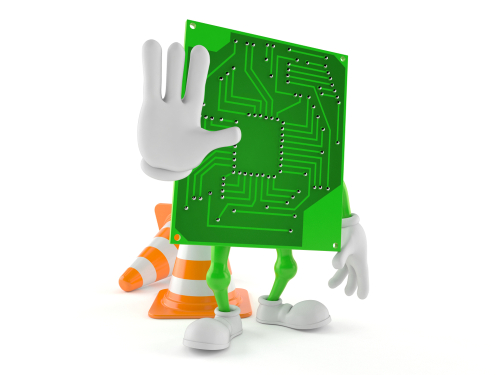
By Greg Papandrew, co-founder of DirectPCB
Some customers will confuse ounces with mils when it comes to the copper plating of a printed circuit board. It is important they know the difference.
The copper weight called out in a PCB is rated in ounces, which is the amount (weight) of the copper covering 1 square foot of bare fiberglass material.
In inches, one ounce of copper equates to a thickness 1.4 mils of copper on the PCB—not 1 mil—and that is where the confusion lies.
The plating of a circuit board is a subtractive and additive process. Unless otherwise specified, the normal plating process that most board manufacturers provide is around a mil of additional copper plating on top of the existing (or start) material.
It is important for buyers to understand the manufacturing process to ensure they meet their customers’ true copper weight requirements.
Copper is expensive, so to save money on a board that requires a 2-ounce finish, buyers will mistakenly ask the PCB vendor to begin with 1 ounce and plate up to 2, thinking that mil of plating is just enough to meet customer needs.
Unfortunately, it is significantly less than what is required. Two ounces of copper equates to 2.8 mils and what the buyer just asked of the supplier will yield a PCB that has, at most, 2.4 mils of copper (1.4 mils start plus the 1 mil plated) or almost 20% less than what is needed.
Would that difference in thickness cause a problem to your customer? I can’t make that call, but as a buyer, you are not giving your customer what they asked for, as called out in the fab drawing.
It’s not just a buyer mistake. Many PCB sales people confuse mils and ounces, too.
But to ensure a PCB is 2 oz finished, the vendor should start with two-ounce material.
Need help with your PCB purchasing? Reach out to me at greg@directpcb.com.
Click here to get a free copy of my book, PCB Basics for Buyers.
